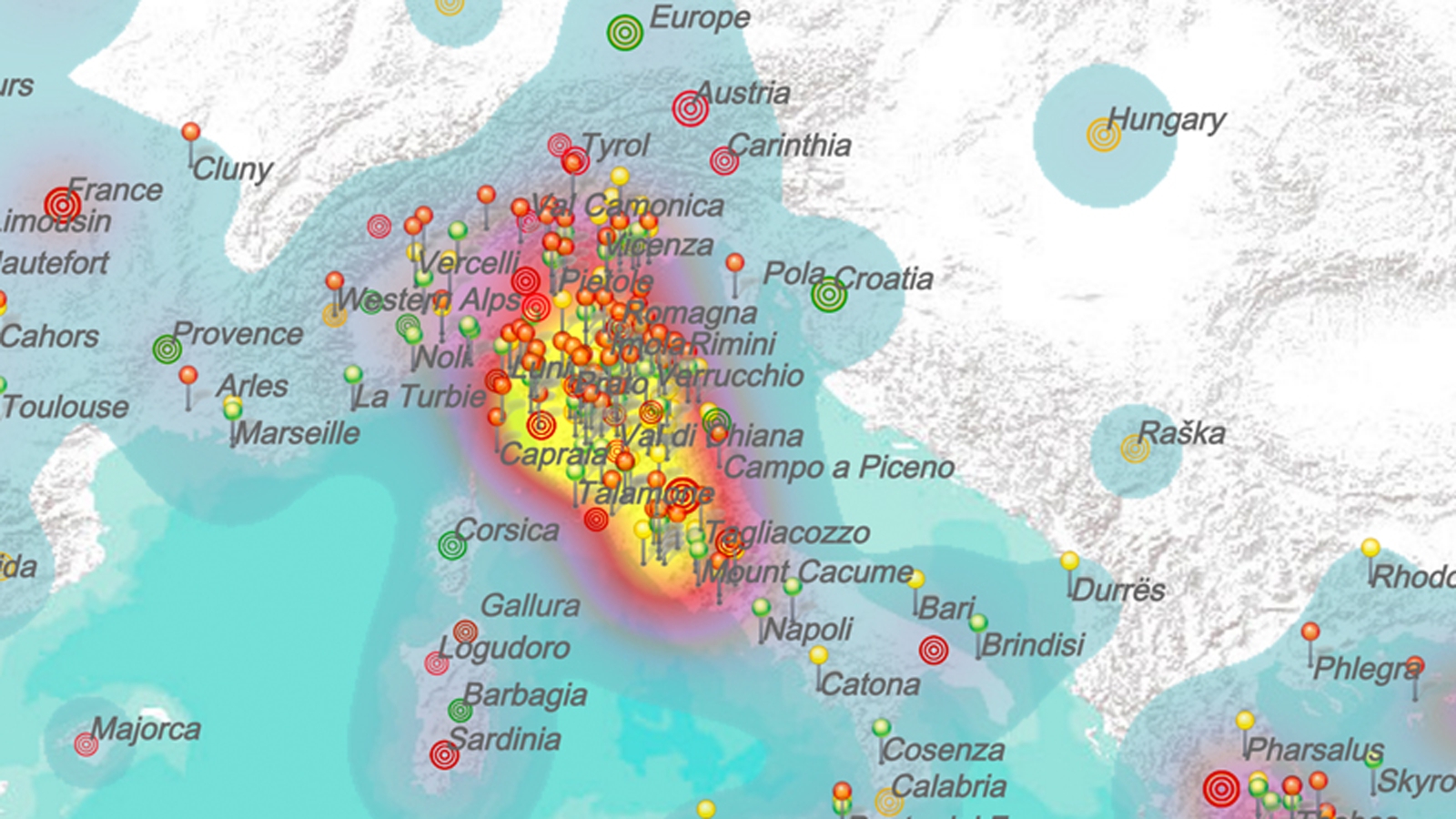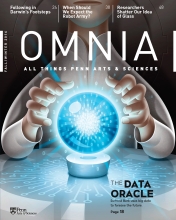Mapping the Divine Comedy
A digital humanities study in Dante's geographical imagination.

Considered a classic of world literature, the Divine Comedy by poet of the Late Middle Ages Dante Alighieri recounts the journey of self-styled pilgrim Dante as he travels the otherworldly spaces of Inferno, Purgatory, and Paradise, searching for redemption. But the tale is also an encyclopedia of medieval geography; from small Italian villages to mythological landmarks, the poem is rife with real-world references.
The question is, how did Dante translate this knowledge into his writing, and how can we represent the complexity of his geographical imagination? With the project Mapping the Divine Comedy, Ph.D. Candidate Andrea Gazzoni seeks to address such questions using an innovative digital interactive map that acts as a guide for readers. Developed from June 2015 to May 2016, the project was funded by an Early Incubation Grant from Penn’s Price Lab for Digital Humanities, with Kevin Brownlee, professor of romance languages, serving as co-investigator. Both didactic and scholarly, the project is an invaluable resource for Dante scholars and students alike— and for anyone simply intrigued by the world of the Divine Comedy. “Over the last several years, I have had the pleasure of supervising Andrea’s highly innovative and extremely important project,” says Brownlee. “The computerization of the Divine Comedy’s maps is absolutely unique as a resource in the world of Dante scholarship. It will allow a new and deeper reading of the text.”
I undertook Mapping the Divine Comedy as a digital humanities project meant not only to educate users, but also to encourage other scholars to seek unique, innovative ways to explore new approaches and tools for their research.” – Andrea Gazzoni
Past attempts at interpretive tools have been limited by the static nature of their format, as a traditional map can incorporate only a small amount of features. Digital tools, on the contrary, provide an opportunity to create multilayered dynamic visualizations. After poring over the Divine Comedy, Gazzoni tagged 345 items, for a total of 729 mentions, each accompanied by the quotation from the related passage. The map allows users to visualize and sort places according to a number of literary, cultural, and geographical categories. Each location is visualized according to distinctive features dependent both on the specificity of the passage in which it appears and on its status in late medieval culture.
Visit www.mappingdante.com, where you will have the opportunity to explore the data dynamically. Below, you can take a video tour of the web site.




